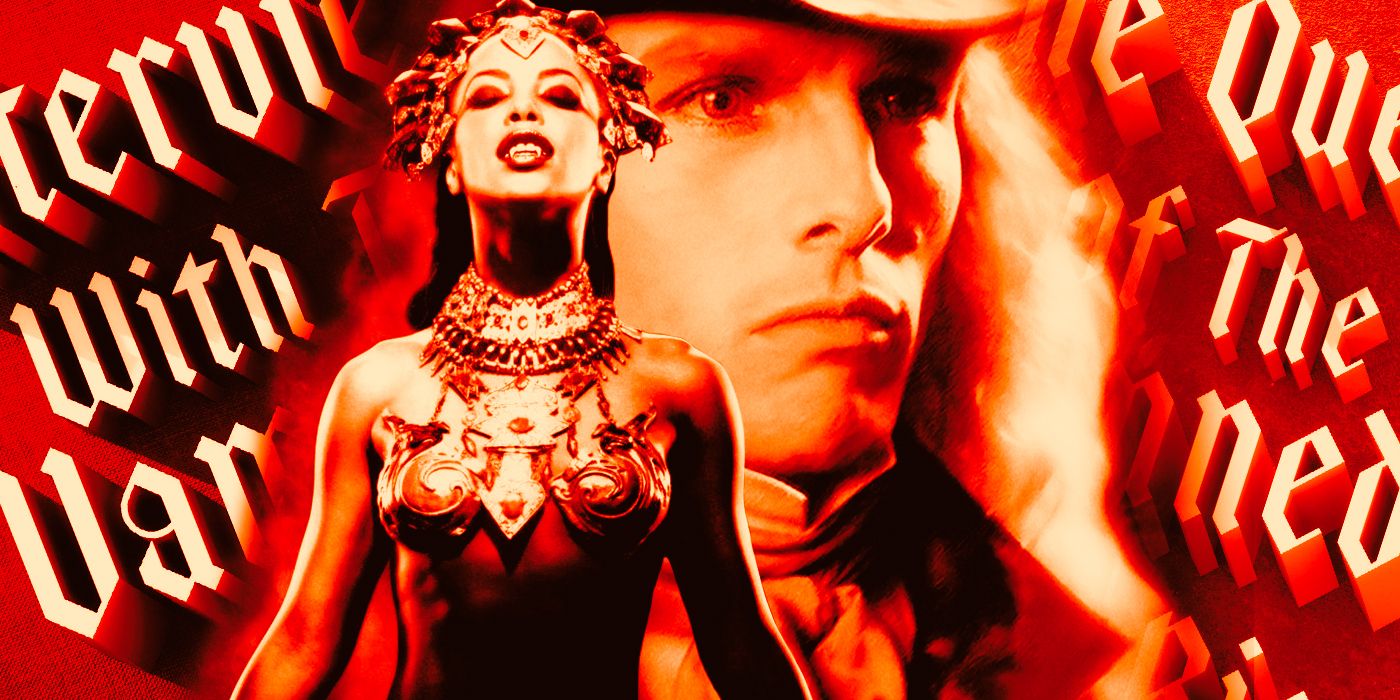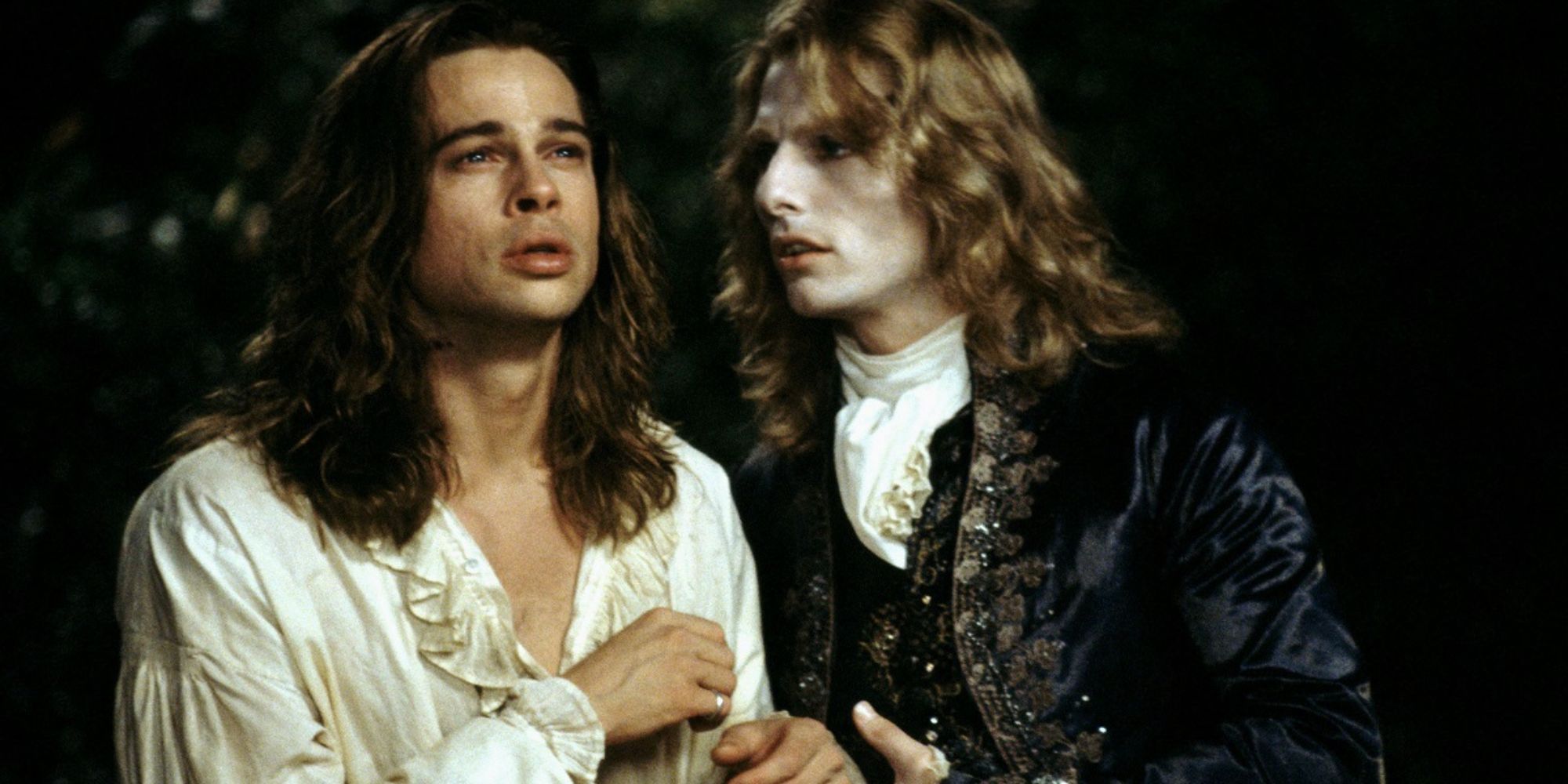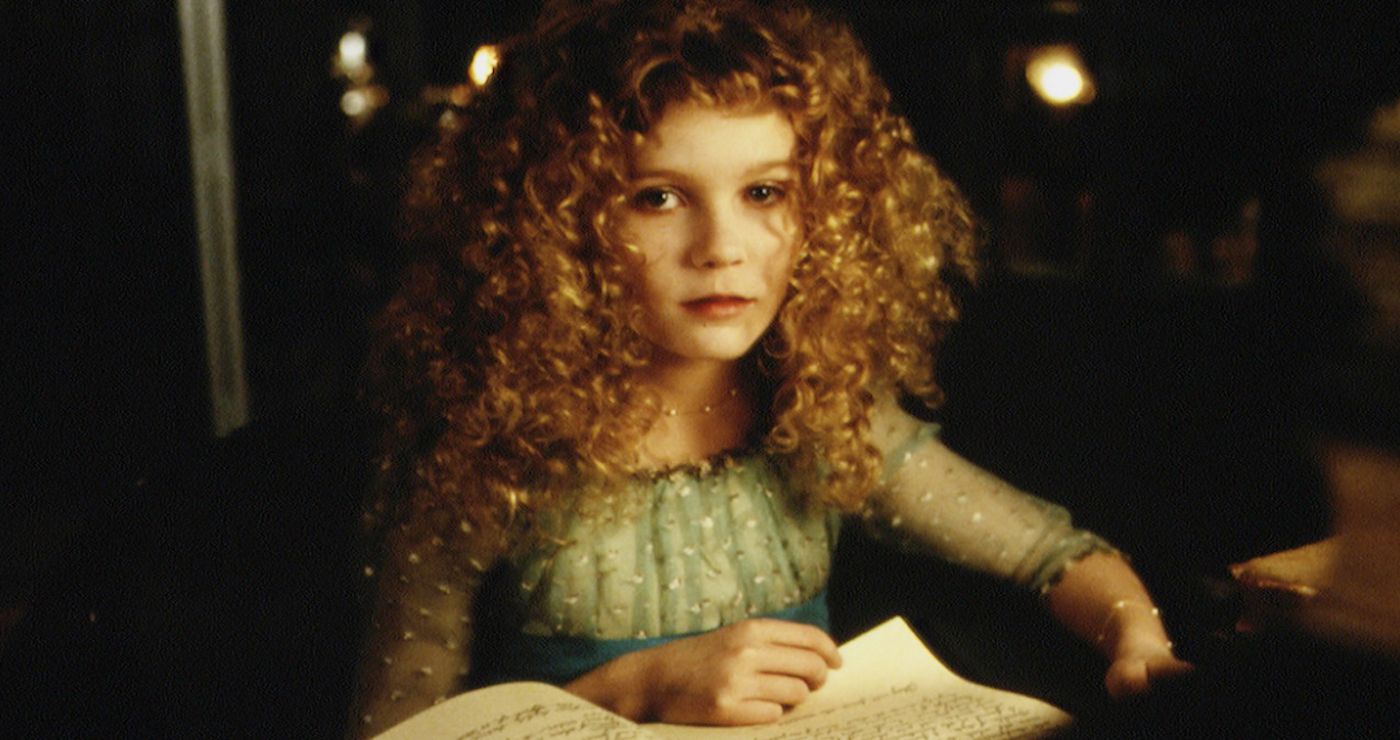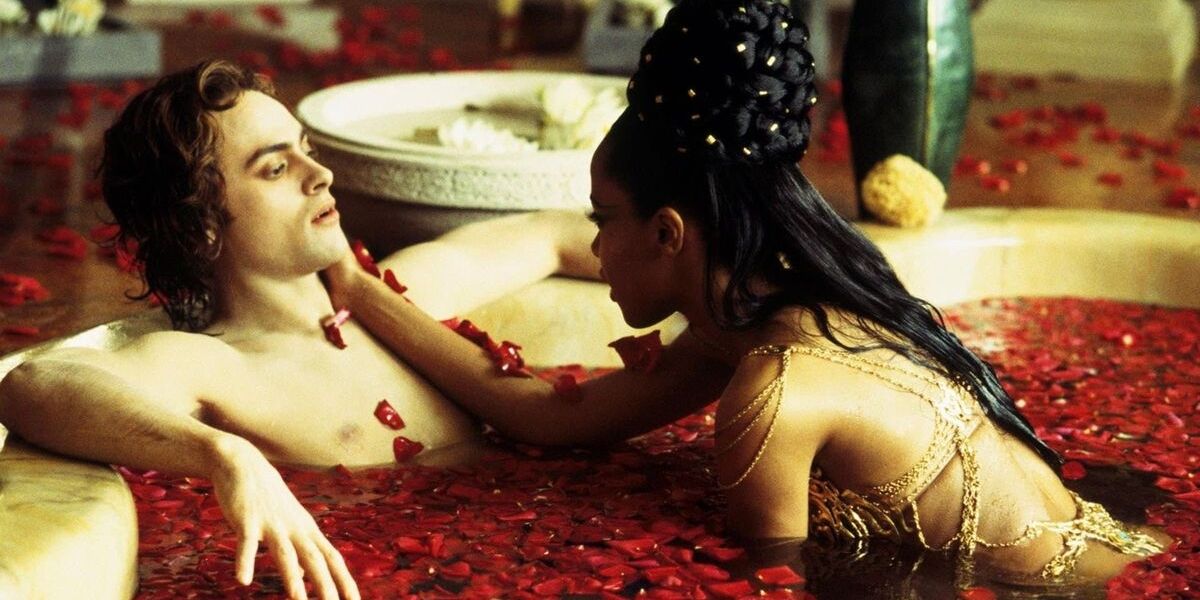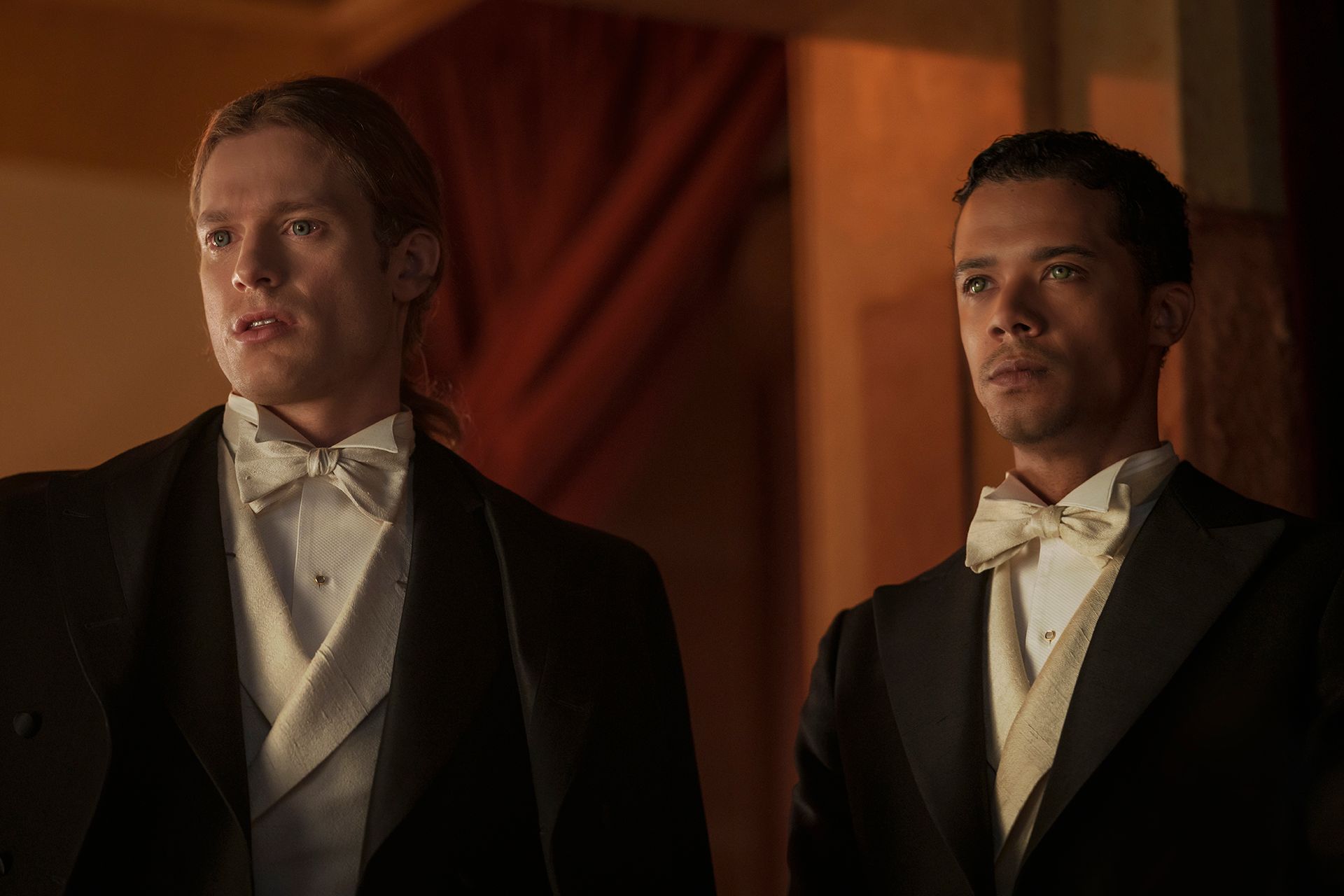The work of Anne Rice is perhaps the most influential vampire fiction of the 20th century. While the concept of vampirism goes back thousands of years and spans many cultures, classic vampire stories as we know them began in the mid- to late 19th century, notably with Dracula by Bram Stoker and Carmilla by Sheridan Le Fanu. These archetypes were brought into 20th century vampire stories on the screen, with Transylvania, gothic architecture, long capes, and busty women in Bavarian dresses being among the many distinguishing features. While Rice still enjoyed the lavish aesthetics of centuries past, her work brought vampires a whole new identity, one in which they were still people underneath, and struggled with very real emotions for far longer than any human ever has to.
Interview With The Vampire does what it says on the tin: a man claiming to be a centuries-old bloodsucker tells his life story to a young journalist whose responses go from indulgent disbelief to fearful realization to morbid curiosity. The man, Louis (Brad Pitt) starts out as a bereaved young plantation owner in 1790s New Orleans, whose grief drives him to greater nihilism and recklessness until one drunken night, a charismatic stranger offers to rescue him from the torture. Rather the stranger, Lestat (Tom Cruise), sees this suicidal man as asking for it, ready for the picking. It is only after their violent first encounter that they really meet, and Lestat offers Louis the gift of eternal life.
At first Louis tries to assimilate to this odd, dark world he suddenly finds himself in, with Lestat acting as a sort of mentor. He struggles with the ironic necessity of killing others in order to survive himself, starting out on junk food like rats and doves, before finally snapping under a heady cocktail of starvation and peer pressure, and feeding on a little girl. Lestat, amused at his pupil’s failure to override instinct with morals, sees an opportunity, and turns the girl Claudia (Kirsten Dunst) into a vampire. They form an unconventional family unit, and as a consequence all too familiar to human parenthood — being bonded for life to another adult by a common dependent — Claudia becomes the "trap baby" that ensures Louis will never leave Lestat’s side.
Until Rice’s work came about, the standard was for the vampire to be framed as a third-party threat from the perspective of a vulnerable protagonist, as the mysterious lurking figure of few words. Interview, as the title suggests, allows the vampire to become the protagonist, and to share a look at the world through their own eyes. Despite its initial allure, it soon becomes evident that this is a torturous perspective. The crux of Louis’ story is that he is cursed with infinity, with the inevitable loss of any meaningful personal connections, and an ever-changing world that he will have to adapt to forever. It is his incessant depression that leads him to crave death as a man, only for him to discover that this supposed escape is more confined than any mortal life could be.
This extends into Claudia’s side of the story. Turned as a young child in order to save her from imminent death, her mind matures while her body refuses to even enter puberty. She grows to resent the eternal childhood that both her vampiric state, and her parental relationships with Lestat and Louis, confine her to. She craves a real life, while Louis craves a real death, and both offer very different perspectives of what it truly means to be a vampire in practical terms. Promised to them both as freedom, it turns out to be the ultimate prison.
Another key aspect of Rice’s stories is the male-oriented eroticism. The allure of lesbian vampires had been explored for decades, both subtly and overtly, from Carmilla to Hammer Horror to the films of Jesús Franco. The AIDS epidemic of the 1980s saw parallels drawn between homosexuality and vampirism, characterizing it as a self-induced condition brought on by promiscuity or supposed deviancy. Interview leans into the homoerotic nature of Louis and Lestat’s relationship: from the physically intimate way that one "infects" the other by swapping bodily fluids, to the two-dads family dynamic they build with Claudia as their surrogate child. In this way, it reallocates the sexual gaze from the audience to the characters themselves, and blurs the line between erotic attraction and a sales pitch no customer could refuse.
The script — credited to Rice, although her drafts were reworked by director Neil Jordan — is nothing short of poetry, and it is much to the cast’s credit that they make it sound like authentic spontaneous speech. In lesser hands, lines like “you are the father of lies” or “my martyr, my philosopher” could have tumbled the whole project into melodrama and stripped it of some of the sincerity that it requires. A careful balance is struck between grand-scale operatic tragedy and relatable human interaction, and even the eccentric stylings of Lestat (which peak as he sings and dances with the corpse of Claudia’s mother) cannot shake the movie loose of its emotional moorings. The script, and even Lestat himself, never really intend to be funny, it just comes naturally to them; of course, making it seem so is the result of very strong writing and direction.
Interview With The Vampire was very well-received. Despite Anne Rice’s highly-publicized distaste for the casting of Tom Cruise, the strength of his performance surprised even her, and marked a notable departure from the sexy action star persona he was largely known for. Kirsten Dunst made an explosive breakthrough performance at just 12 years old as Claudia, a role that demanded subtlety and maturity for such a young performer. Although Brad Pitt felt that he was dwarfed by the theatrics of Cruise’s role, he brings a sensitivity and gentleness to Louis that stirs sympathy and makes his endless plight all the more tragic. Every aspect of the movie, from the costumes and music, to acting and direction, won great acclaim, many nominations and a few awards. Following his warm-up act The Company of Wolves and his breakthrough The Crying Game, Interview propelled Jordan to new heights and established him as a formidable director with finesse, sensitivity and a notable passion for folklorish stories.
Despite Interview’s warm reception and star power, further cinematic adaptation of The Vampire Chronicles floundered for a number of years. When one of many attempts at a next chapter finally gained some traction, a very different movie was turned out. Queen of the Damned sees Lestat enjoying rock god fame in the early 21st century and facing the unexpected awakening of Akasha, the ancient vampire queen. All returning characters from Interview were recast, with R&B singer Aaliyah lending most of the big name appeal in the titular role. Gone was the subtlety and operatic grace of Interview, in favor of flashy millennial pulp; Rice, to the surprise of no one, denounced the movie, as did most critics. Despite a fairly healthy box office performance, it was a big stepdown for the Chronicles, and how they were viewed by audiences.
It was with the bad taste of Queen of the Damned left in the public’s mouth that the Vampire Chronicles would remain — at least in screen form — for 20 long years, though this is not to say that efforts weren’t made. The rights to the work flipped back and forth between Rice and various media companies, and there were points at which adaptations were discussed or in the early stages of development. In 2014, the idea was for the entire Chronicles to become a movie series, starting with a remake of Interview and carrying on. This never came to pass. Over the years, Rice battled to get The Vampire Lestat its own movie, which also never happened.
Hope is on the horizon though. Last summer, an eight-part television series of Interview With The Vampire was announced, with Sam Reid, Jacob Anderson and Bailey Bass to play Lestat, Louis and Claudia respectively. Unlike many Rice adaptations, this one seems to have made it through the production process, and is due to air this fall. There is plenty within the 350-odd pages of the first book alone to sufficiently fill eight episodes, but given the vast world built over the course of the Vampire Chronicles, it wouldn’t be surprising if elements of other stories and characters are worked in.
More optimistically, there is a chance that the series could take off, and renew enough interest in the series to warrant spinning out a long-running show that covers all 13 books. Anne Rice was fiercely protective of her work and did not mince her words when she considered someone’s take on her books to be subpar or misjudged. Her passing last year sadly leaves us without her territorial interjections, although her son Christopher (also a novelist) can be assumed as the unofficial guardian of her legacy and first port-of-call when it comes to legitimizing any future adaptations.
Neil Jordan’s Interview With The Vampire can be held as an example of many things: efficiently telling 200 years worth of story within two hours; lovingly adapting a fine and well-established book that was not without its controversy; the strength of character and delivery forming the nucleus of a story. But most of all, it proved that there was a lot of potential in Anne Rice’s work that, under the right conditions, could flower into something stylish and spectacular. Queen of the Damned and the many attempts at adaptation along the way failed to stick the landing. But here’s to hoping that the upcoming series will breathe new life into a brilliant work that has always struggled to find its feet, and grant it the comprehensive adaptation it deserves.

